Juyeong Sikdang (주영식당)
4.2Km 2021-03-25
7, Singil-ro, 60ma-gil, Yeongdeungpo-gu, Seoul
+82-2-833-7357
This is a place that sells spicy soup dishes. The best menu at this restaurant is kimchi stew. This Korean dishes restaurant is located in Yeongdeungpo-gu, Seoul.
Hongmu Yangkkochi (홍무양꼬치)
4.2Km 2021-03-25
1, Singil-ro, 60ga-gil, Yeongdeungpo-gu, Seoul
+82-2-6449-0326
As a place where you can eat at low prices, this restaurant is loved by local residents. This Korean dishes restaurant is located in Yeongdeungpo-gu, Seoul. The most famous menu is lamb skewers.
Mokdong Stadium (목동운동장(목동아이스링크,사격장)
4.2Km 2022-09-14
939, Anyangcheon-ro, Yangcheon-gu, Seoul
+82-2-2240-8800
Mokdong Stadium was opened in 1989 with a stadium, a baseball field and an indoor ice rink and added footsal field in 2008 to improve Korea’s sports culture. The soccer field was used as the home field for K-league teams in the past. The ice rink hosts hockey matches and figure skating competitions as well as ice ballet performances. Other facilities include a main square, an indoor shooting range and a gym for residents to enjoy.
Seodaemun Independence Park (서대문독립공원)
4.2Km 2022-12-15
251, Tongil-ro, Seodaemun-gu, Seoul
+82-2-3140-8305
Seodaemun Independence Park was built on the former Seoul Detention Camp. It was used to imprison thousands of Korean independence activists until the liberation from the Japanese occupation on August 15, 1945, as well as the political prisoners during the political turmoil in the 1960s. When the prison was moved to Uiwang-si, Gyeonggi-do in November 1987, the area was restored and turned into a memorial park in August 15, 1992 to honor the sacrifices of the martyrs. The park preserves seven prison buildings, an execution ground, underground women’s prison, and the March 1st Movement Monument that has been moved from Tapgol Park in Jongno.
One of the most significant monuments of the Seodaemun Independence Park is Dongnimmun Gate (Independence Gate), which has been designated a Historic Site. Nearby is Dongnipgwan (Independence Hall), originally called Mohwagwan, which was used to greet Chinese envoys during the Joseon dynasty. Today, the hall enshrines 2,327 tablets inscribed with the names of Koreans who died for the cause of national independence. Standing right next to Dongnimmun Gate are the remnants of Yeongeunmun Gate, another Historic Site. Other sights inside the park include the Patriotic Martyr Monument, Declaration of Independence Monument, and Statue of Dr. Seo Jae-pil, who was an independence activist and publisher of Korea’s first independent newspaper. The main highlight of the park is the Seodaemun Prison History Hall, a former prison building that was renovated into a history museum.
Seoul Yakhyeon Catholic Church (서울 약현성당)
4.2Km 2020-03-26
447-1, Cheongpa-ro, Jung-gu, Seoul
+82-2-362-1891
Yakhyeon Catholic Church was established as a result of Korea gaining religious freedom in the 23rd year of King Gojong’s reign (1886) and the subsequent increase of the Catholic population. In 1891, Myeongdong Cathedral's head priest Doucet laid down the foundation stone in Hap-dong. Coadjutor bishop Coste was in charge of design and construction and the building was eventually completed in 1892. The church was named after "Yakjeonhyeon," or a hill of medicinal herbs. This is because the place where the church is located was once a hilly area covered with medicinal herbs. Later on, Yakjeonhyeon was shortened to Yakhyeon and it became the name of the hilly area between Malli-dong and Seoul Station.
Yakhyeon Catholic Church was the first Western-style church ever built in Korea. It's Gothic architecture features a 12-meter-wide and 32-meter-long cruciform construction with low arched windows and a pointed-arch entrance gate.
Noryangjin Fisheries Wholesale Market (노량진수산물도매시장)
4.2Km 2021-01-22
674, Nodeul-ro, Dongjak-gu, Seoul
+82-2-2254-8000
Opened in 1927 on Uiju-ro Street next to Seoul Station, Noryangjin Fishery Market is one of Korea's largest seafood markets. It was moved to the newly constructed building in 1971 in Noryangjin with the Fisheries Cooperative Association taking over the market to promote the fishing industry as well as increase fishing income in 2002. In addition, they started modernizing projects that made Noryangjin Fishery Market a leading fishery market in Korea. The market handles about 50% of metropolitan volume and trades 250 to 300 tons of fishery products every day. The prices of fishery products are decided according to quantity so one is recommended to visit the official website to check the bid. General retail prices are 10 to 20% higher than the auction prices. The market is a mix of wholesale and retail stores and has a lively atmosphere, especially in the early morning from 1 a.m. to 3 a.m., when the live fish auction takes place.
Dongnimmun Yeongcheon Market (독립문영천시장)
4.2Km 2023-01-17
189-1, Tongil-ro, Seodaemun-gu, Seoul
Yeongcheon Market, which was formed in the 1960s near Dongnimmun Gate in Seodaemun-gu, is a marketplace with over 50 years of history and tradition, once famous as one of the largest rice cake wholesale markets in Seoul. It is set up near a residential district, which makes it one of the city's most notable street-style traditional markets that nearby residents frequently visit. The city of Seoul selected the area surrounding 38 Yeongcheonsijang-gil, Seodaemun-gu as the "Future Heritage of July" in 2021.
It is a large-scale traditional market that currently features around 198 stores, and it is well-known for its various foods and snacks such as tteokbokki and twisted donuts sold at about 40% of all shops.
Wang Donkkaseu Wang Naengmyeon (왕돈까스왕냉면)
4.2Km 2021-03-25
1, Dosin-ro, 65-gil, Yeongdeungpo-gu, Seoul
+82-2-882-9292
This is a place that sells directly prepared pork cutlet every day. This Korean dishes restaurant is located in Yeongdeungpo-gu, Seoul. The representative menu is pork cutlet.
Sangam-dong MBC New Headquarters Media Center (상암동MBC신사옥미디어센터)
4.2Km 2024-11-19
255 Seongam-ro, Mapo-gu, Seoul
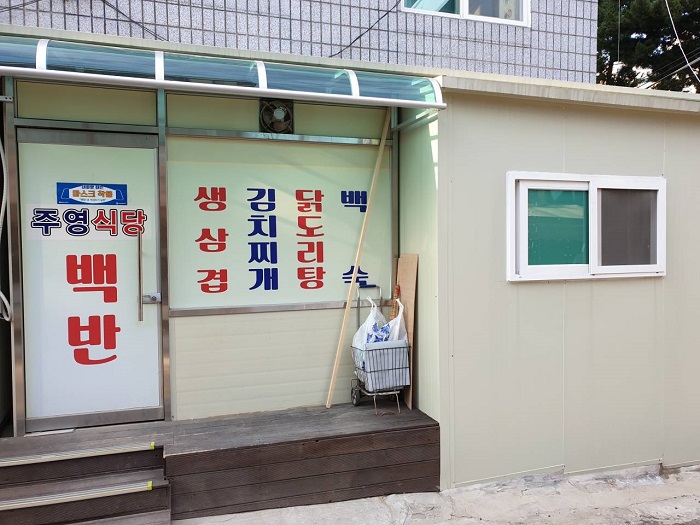

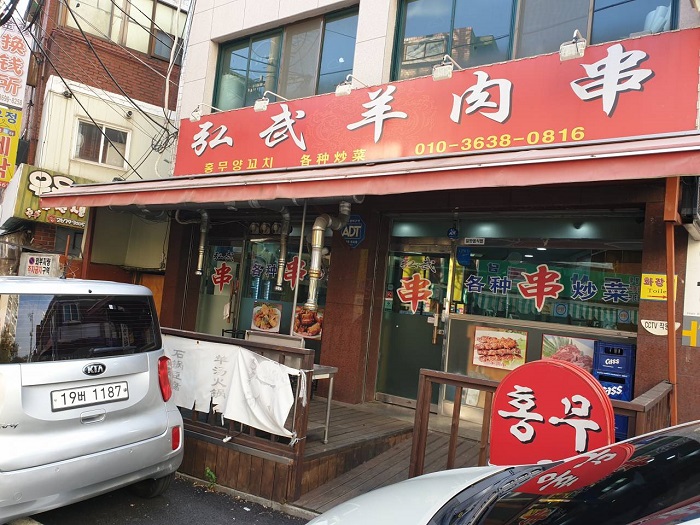
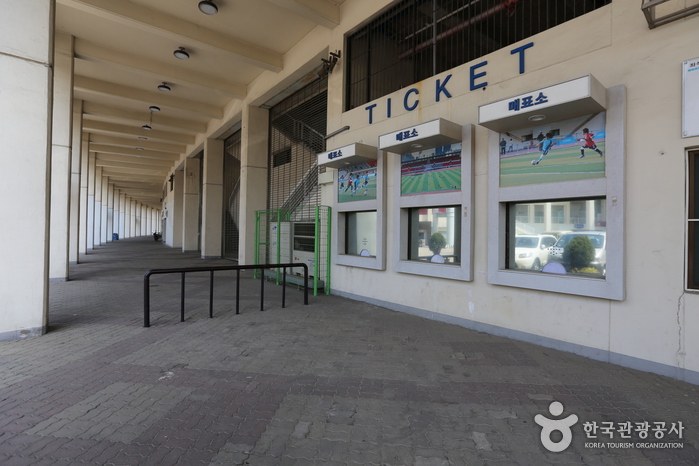
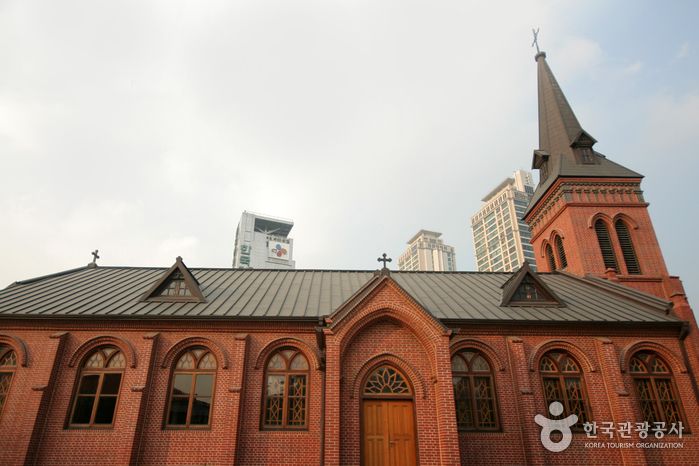
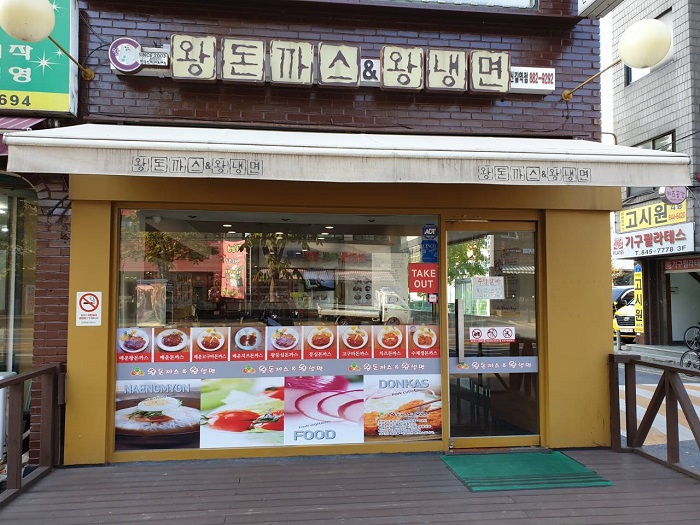

 English
English
 한국어
한국어 日本語
日本語 中文(简体)
中文(简体) Deutsch
Deutsch Français
Français Español
Español Русский
Русский